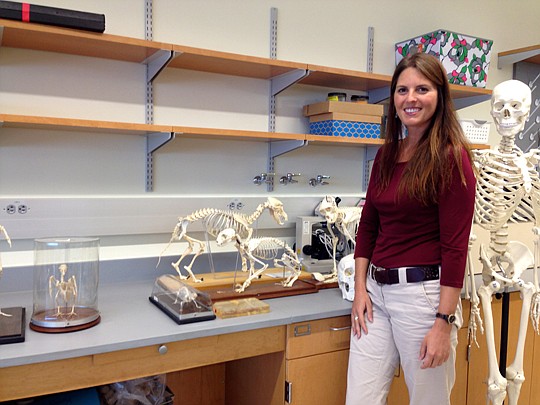
Growing up in the suburbs of Washington, D.C., Quincy Gibson was never near dolphins, but she knew her future would include the animals.
Gibson's fascination with them has propelled her into a research career that examines the behaviors and health of dolphins and aims to improve the lives of local coastal dolphins.
Gibson is an animal behavior and biology professor at the University of North Florida. She said her work observing dolphins can reflect the health of a community's waterways, she said.
"They're very similar to humans in a lot of ways," she said. "If the dolphins are showing a lot of signs of distress and their populations are declining, then we know something is going wrong in the ecosystem."
Dolphins have taken Gibson around the world. She's studied them in Australia and Hawaii. But in 2010, she planted her roots in Jacksonville after 19 dolphins washed up on the shore of the St. Johns River. Gibson came to Jacksonville to help identify why this occurred and to lead the university's Dolphin Research Program.
Gibson takes her graduate students and a handful of undergraduates out on the water to monitor local dolphins. The data collected on those days are important in identifying the health of area dolphins and learning from their behaviors. It's vital that dolphins are thriving, she said, because of their role in the river's ecosystem.
"Dolphins tend to be at the top of the food chain, and they keep everything below them in check," Gibson said. "If you remove the top predator, all the things below them are going to experience effects because of that."
Out on the water, the students watch for the 300 or so that swim in the river. She's given many of them names like Pocahantas, Burt and Ernie. All she needs to identify a dolphin is its dorsal fin, which is unique to each dolphin, she said.
"I know them just as if I was looking at human faces," Gibson said.
Out of the water, most of her work is done in one of the two labs on campus. One is a biology lab filled with skeletons, specimens in jars and anatomical models. This is where Gibson teaches biology.
Her research lab is where she and her graduate students study the data they've collected in the water. She also has an office in the building filled with photos of local dolphins. No matter where she is in the building, she's known everywhere as the "dolphin lady."
But she loves being associated with the animals, she said.
"They're like aquatic humans to me – their social lives are almost identical to watching a soap opera on TV," Gibson said.